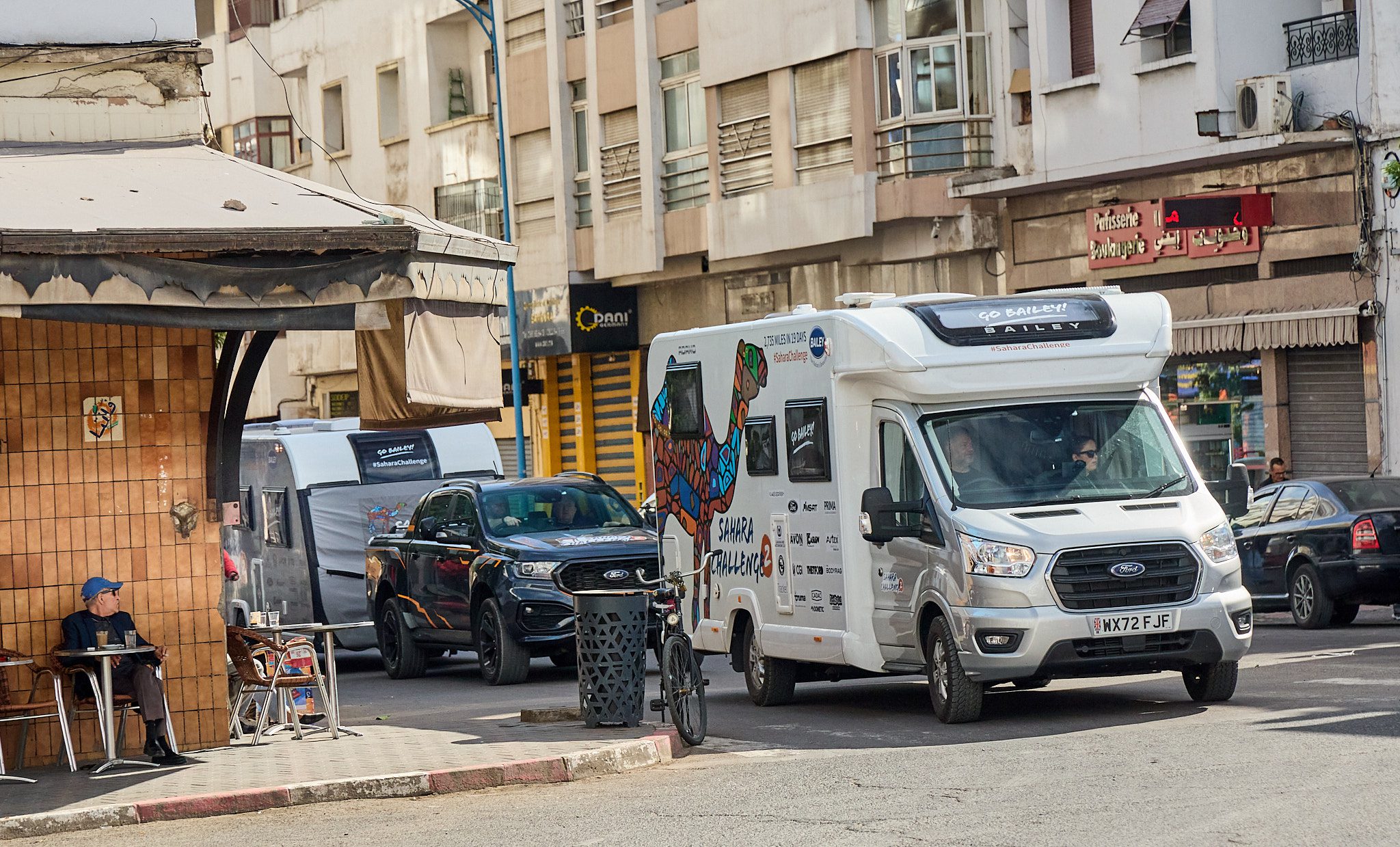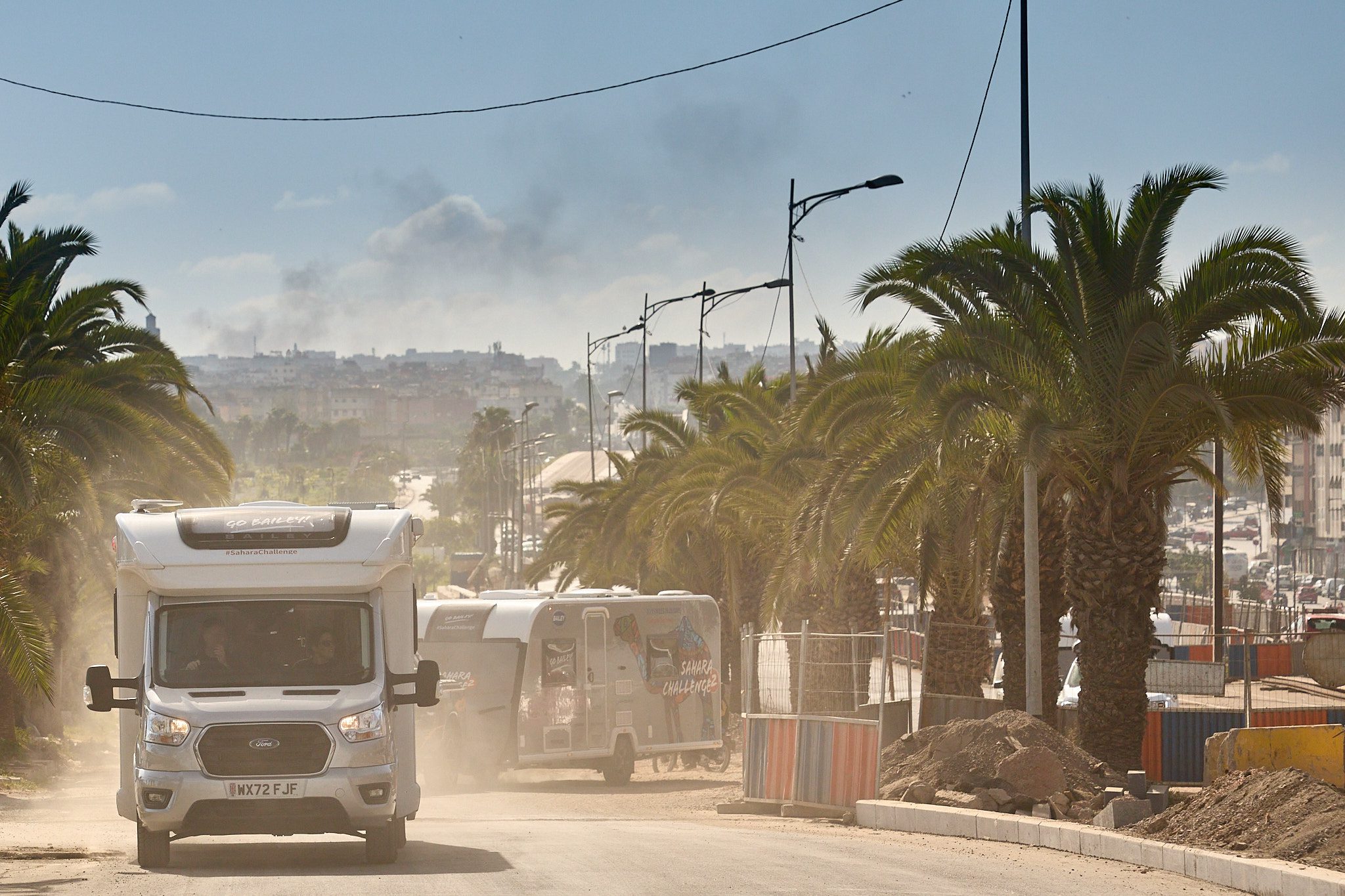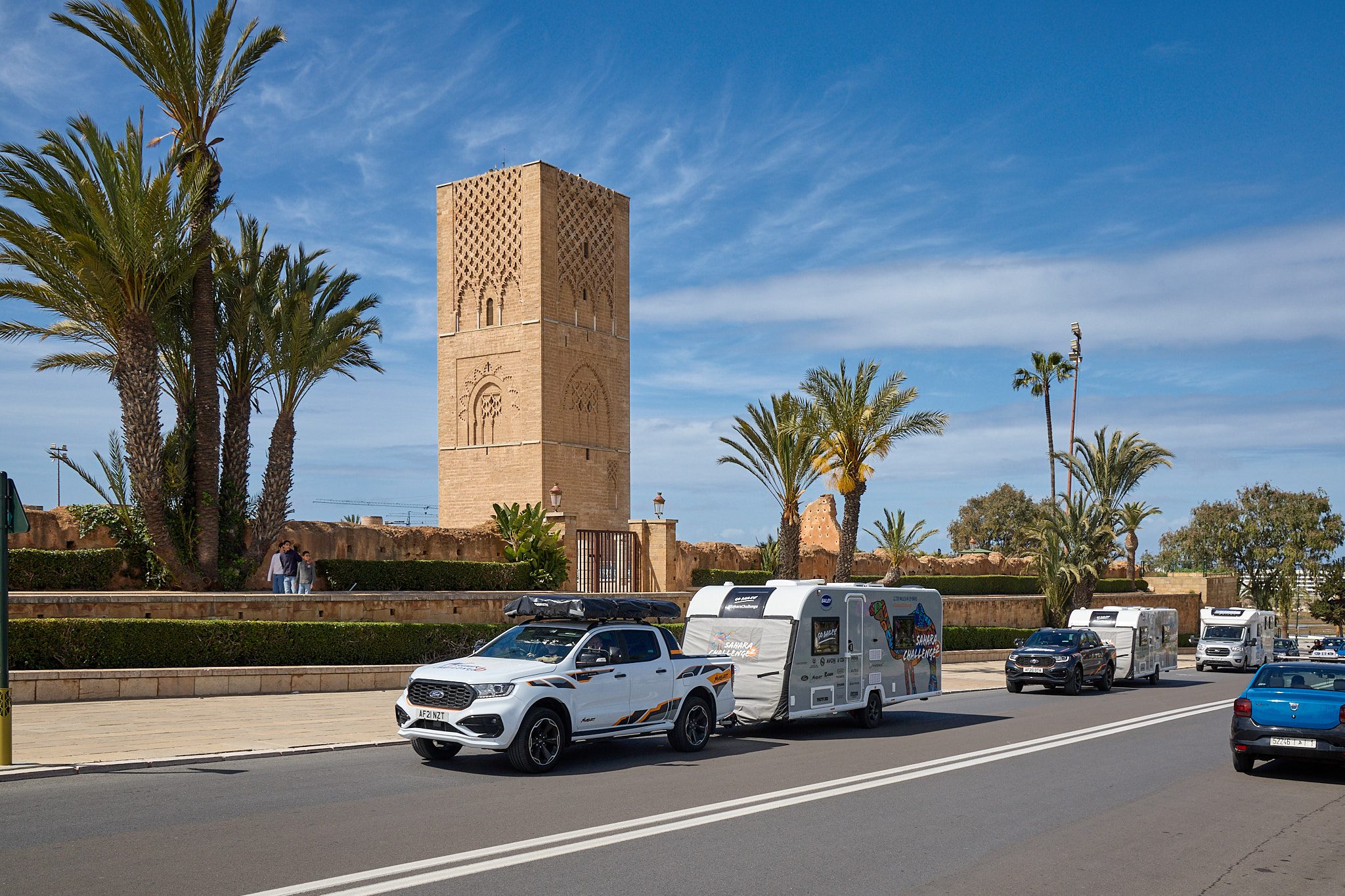Exploring Morocco by Caravan or Motorhome: City Breaks in Casablanca, Rabat, Fez and Marrakesh

During Bailey of Bristol’s Sahara Challenge 2, we visited four of Morocco’s five largest cities, each possessing a different feel. Museums have played a big part in previous city breaks to London and Bilbao, but with large sections of Moroccan cities remaining unchanged for many hundreds of years, sightseeing opportunities are everywhere.
The change of pace is a popular reason for booking any city break, and Casablanca, Fez, Rabat, or Marrakech will not disappoint.
The Moroccan markets, or souks
Each city has its own souk, although our schedule meant we had more time to explore Fez, a city synonymous with North African travel. Often confused with a medina – the old part of a town or city – souk means market.
As you’d expect at any tourist hot spot, prices are based upon footfall, with some being higher than expected. That said, everything is negotiable and even when I found a keenly valued trinket, our Moroccan fixer insisted that I haggle as he said it would cause offence not to. As a guide, he suggested I offer half before settling on a final price of two-thirds. He said this was a common pricing structure in Fez and other souks across the country.
Unless you possess a superhuman sense of direction, it’s worth dropping a pin on Google Maps when entering each market. The warren of identical streets can soon confuse the hardiest of travellers.
Cash is king, as it is across the rest of Morocco, so be sure to find a suitable cash machine before entering. We used a Revolut card due to the favourable exchange rate it offered.

City centre driving
We were advised against driving in any city, but with Casablanca’s Hassan II Mosque offering the perfect photographic backdrop, it proved too tempting. The A1 runs along the coast and bears a striking resemblance to many French or Spanish autoroutes. However, conditions soon changed when we left the dual-carriageway and began towing the caravans through the city centre. Casablanca is a city of contrast and is worth adding to the wish list, although leave your caravan or motorhome at a nearby campsite and enjoy a taxi ride into the centre.
A Moroccan taxi journey is a worthy addition to any bucket list. The fare was good value for money, but the sheer mayhem of the experience is the reason for the recommendation. Driving standards are unpredictable at best, which is magnified the closer you get to the centre. Each taxi driver can judge their car to within a hair’s breadth while creating lanes where no lanes exist. Not only does this turn a thirty-minute journey into a fifteen-minute dash, but it also allows you to enjoy an adrenalin-fuelled cardiac workout. Gym session? No thanks, I’ll opt for the taxi trip every time.

Restaurants
Few recognisable chain restaurants exist, although I was surprised to see the Golden Arches of McDonald’s on occasion. I try to adopt the ‘when in Rome’ philosophy when travelling, so enjoying traditional Moroccan cuisine was high on my wish list. This meant eating at various establishments, all chosen using the tried & tested method of picking a spot popular with the locals. Restaurants are generally empty for a reason.
Travelling during Ramadan limited certain options, with wine or beer being absent from many menus, although this did make eating out a very cost-effective option. Mint tea and bottled water were our beverages of choice which often cut the bill to 80 MAD per head, or just over £6.

Casablanca
Population: 3.8M
Campsite: Camping L’Ocean Bleu
Located on the Atlantic coast, Casablanca is not only the largest city in Morocco but also home to the country’s second-largest port. It’s also a hub for Morocco’s finance and business interests, which may explain the amplified ‘hustle & bustle’ on the city streets.
Located on a promontory, the Hassan II Mosque looks across the Atlantic Ocean and is the largest functioning mosque in Africa and the 7th largest in the world. The sheer scale is hard to fathom from photographs, and it really must be seen to be appreciated. It’s surprisingly modern by Moroccan standards, having been completed in 1993, and this modern building has a 21st Century feature – a rooftop laser that points towards Mecca.

Rabat
Population: 1.9M
Campsite: Camping L’Ocean Bleu
Founded over one-thousand years ago, Rabat is an ancient city, although it only became Morocco’s capital in 1956 after Morocco achieved independence. Its history is somewhat chequered, and it was home to Barbary pirates for many years until the effects of French rule were felt.
Home to Morocco’s king, the city limits were unlike anywhere else we visited in Morocco, with freshly clipped grass, immaculate hedges, and armed guards stationed every few yards around the palace boundary. Morocco does have a litter problem in certain places, but not Rabat, as every square inch had been scoured by an army of people whose sole aim is to keep this particular city litter free. Drivers within Rabat also appeared to be on their best behaviour, with the roads being easy to negotiate…by city centre standards.

Marrakesh
Population: 1M
Campsite: Ourika Camp
Marrakesh is also over one-thousand years old, and its red walls, constructed between 1122 and 1123, earned it the ‘Red City’ nickname. The Medina has been granted UNESCO World Heritage status, and the population of just one million people belies the intensity of this city.
Our time in Marrakesh was limited, although we enjoyed traditional Moroccan fayre from a restaurant overlooking the market square. This tourist hot spot included snake charmers and garment sellers. As time was tight, we could not visit the souk; a shame as it’s the oldest in Morocco.
Tourism, especially from French visitors, has driven a real estate boom, and from Ourika Camp to the centre of Marrakesh – a 15-minute trip – it’s easy to see how the city has expanded in recent years.

Fez, or Fes
Population: 2.7M
Campsite: Camping Le Diamant Vert
As Fez was on the return leg of our journey, we had more time to spend within the city, which is a likely explanation as to why it remains a personal favourite.
We had a guide for our trip to the medina, a handy addition due to ancient passageways that are maze-like in construction. Traditional clothing and household wares are popular in the souk, with English being widely spoken when purchases are on the cusp of being made. Having already found gifts for my wife and daughter, the aim of the day was to find a Moroccan football shirt for my football-mad son – and Fez didn’t disappoint.
Founded during the 8th-9th Centuries, Fez is the oldest city we visited, and as such, it makes the mind boggle when thinking of past generations that have trodden the same streets.

In Part 4 of this series, I’ll discuss Morocco’s more adventurous routes, including must-see sections of The Atlas Mountains and roads to avoid.
Previous
Exploring Morocco by Caravan or Motorhome: Which Campsite?
Next
Exploring Morocco by Caravan or Motorhome: Adventurous Moroccan Routes
Latest news & events
See all news & eventsChichester Caravans Uckfield Spring Sale
LONDON ROAD, UCKFIELD, EAST SUSSEX
Bailey Caravan Launch Event at Black Country Caravans & Camping
CORNGREAVES ROAD
CRADLEY HEATH
WEST MIDLANDS



